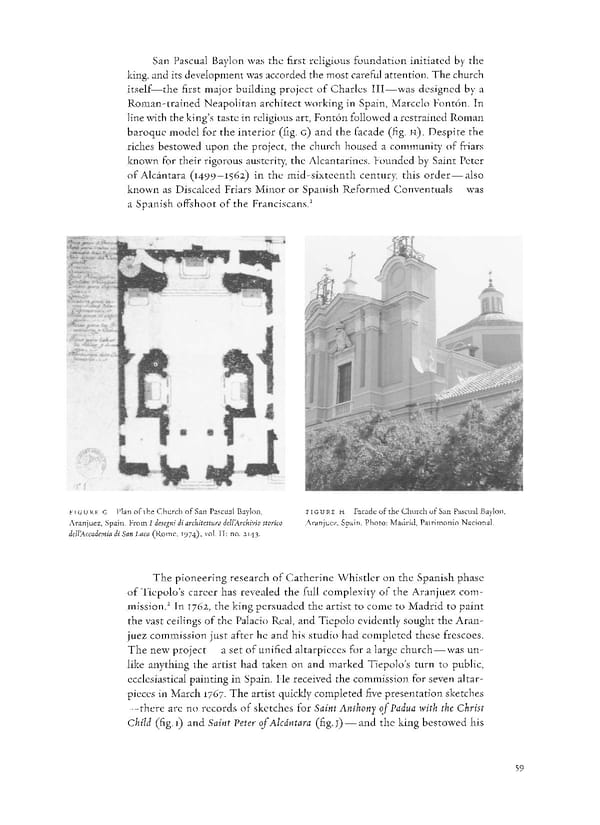San Pascual Baylon was the first religious foundation initiated by the king, and its development was accorded the most careful attention. The church itself—the first major building project of Charles III—was designed by a Roman-trained Neapolitan architect working in Spain, Marcelo Fonton. In line with the king's taste in religious art, Fonton followed a restrained Roman baroque model for the interior (fig. G) and the facade (fig. H). Despite the riches bestowed upon the project, the church housed a community of friars known for their rigorous austerity, the Alcantarines. Founded by Saint Peter of Alcantara (1499 — 1562) in the mid-sixteenth century, this order — also known as Discalced Friars Minor or Spanish Reformed Conventuals—was a Spanish offshoot of the Franciscans.1 FIGURE G Plan of the Church of San Pascual Baylon, FIGURE H Facade of the Church of San Pascual Baylon, Aranjuez, Spain. From I desegni di architettura dell'Archivio storico Aranjuez, Spain. Photo: Madrid, Patrimonio Nacional. dell'Accademia di San Luca (Rome, 1974), vol. II: no. 2143. The pioneering research of Catherine Whistler on the Spanish phase of Tiepolo's career has revealed the full complexity of the Aranjuez com- 2 mission. In 1762, the king persuaded the artist to come to Madrid to paint the vast ceilings of the Palacio Real, and Tiepolo evidently sought the Aran- juez commission just after he and his studio had completed these frescoes. The new project—a set of unified altarpieces for a large church—was un- like anything the artist had taken on and marked Tiepolo's turn to public, ecclesiastical painting in Spain. He received the commission for seven altar- pieces in March 1767. The artist quickly completed five presentation sketches —there are no records of sketches for Saint Anthony of Padua with the Christ Child (fig. i) and Saint Peter of Alcantara (fig. j) — and the king bestowed his 59
 Giambattista Tiepolo: Fifteen Oil Sketches Page 59 Page 61
Giambattista Tiepolo: Fifteen Oil Sketches Page 59 Page 61